http://www.voltairenet.org/article167553.html
source: reseau Voltaire
Revelations on Rafik Hariri’s assassination
Thierry Meyssan
Moscow
29 November 2010

All the conflicts rocking the Middle East today crystallize around the Special Tribunal for Lebanon (STL). Peace hinges on it, and so does war. For some, the STL should bring about the dissolution of the Hezbollah, quell the Resistance and establish a Pax Americana. Others consider that the STL is flouting the law and subverting the truth to ensure the takeover of a new colonial order in the region.
The Tribunal was created on 30 May 2007, pursuant to UN Security Council resolution 1757, to prosecute the alleged sponsors of former Prime Minister Rafik Hariri’s assassination. In the political context at that time, this implied nothing more and nothing less than bringing to trial serving Presidents Bashar el-Assad of Syria and Emile Lahoud of Lebanon, not exactly favourites of the neo-conservatives. However, the charges were not pursued since they were based on flimsy evidence planted by false witnesses. With no accused left, the Tribunal could easily have disappeared in the meanders of bureaucracy were it not for a turn of events that catapulted it back into the epicenter of the turbulent Middle East political scene.
On 23 May 2009, Atlanticist journalist Erick Follath disclosed on Der Spiegel Online that the prosecutor was poised to indict new suspects: certain Hezbollah military leaders. For the past 18 months, Hassan Nasrallah, Hezbollah’s secretary-general, has been proclaiming his party’s innocence. He maintains that the real aim of the proceedings is to decapitate the Resistance and clear the region for the Israeli army. For its part, the U.S. administration in a sudden surge of righteousness pledged that no one would be allowed to shun international Justice.
In any event, the indictment - which all believe to be imminent - against Shia leaders for the assassination of a Sunni leader is of such a nature as to spark off a fitna, namely a Muslim civil war, plummeting the region into new depths of bloodshed and violence.
During his 15 and 16 November official visit to Moscow, Saad Hariri - current Lebanese Prime Minister and son of the deceased - reiterated that the political exploitation of the Tribunal exposes his country to the risk of a new conflagration. President Medvedev retorted that Russia wants Justice to be served and reproves any attempt to discredit, weaken or delay the Tribunal’s proceedings. This position of principle arises from the confidence that the Kremlin decided to place in the STL. But it risks being severely eroded by Odnako’s revelations.
Indeed, we deemed it desirable to delve into the circumstances of Rafik Hariri’s assassination. The data we unearthed has opened a new avenue, making one wonder why it had never been explored until now. In the course of our lengthy investigation, we encountered a great number of actors, too many no doubt, so that the news of our work spread quickly, alarming those for whom the assassination trail implicating the armed Lebanese Resistance represents a real godsent. Aiming to intimidate us, the Jerusalem Post on 18 October launched a preventive attack through a piece referring to our work. In a purely libelous vein, it accuses the author of this article of having received 1 million dollars from Iran to exonerate Hezbollah.
Getting down to facts, Rafik Hariri’s convoy was attacked in Beirut on 14 February 2005. Twenty-three people were killed and one hundred injured. A preliminary report commissioned by the Security Council calls attention to the unprofessional conduct of the Lebanese magistrates and police. To redress the situation, the SC assigned its own investigators, providing them with the important means that Lebanon was unable to offer. From the outset of the investigation, it was generally accepted that the attack had been perpetrated by a suicide bomber driving a van packed with explosives.
Having been established to compensate for the Lebanese lack of professionalism, one would have expected the United Nations mission to scrupulously observe the classical criminal procedures. Not so! The crime scene - on the basis of the topography still intact as well as the photos and video footage shot on that day - was not examined in detail. The victims were not exhumed and no autopsies were performed. For a long time, no attempt was made to ascertain the modus operandi. After discarding the hypothesis of a bomb buried in the ground, the investigators espoused the one involving the van withough bothering to verify it.
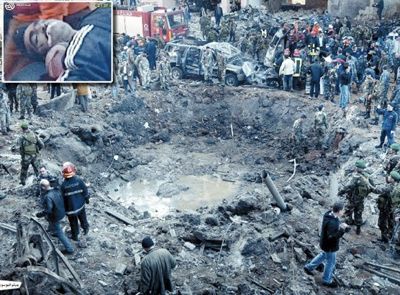
And yet, this version is implausible: looking at the crime scene, anyone can easily observe the very large and deep crater that a surface explosion could not have dug out. Faced with the adamancy of the Swiss experts who refused to endorse the official version, on 19 October the Special Tribunal for Lebanon (STL) recreated the crime scene behind closed doors. It didn’t take place in Lebanon, nor in the Netherlands which is the seat of the STL, but in France, one of the countries funding the Tribunal. The buildings surrounding the crime scene were reconstructed and earth was brought in from Beirut. The convoy was reconstituted, including the armoured vehicle. The aim was to demonstrate that the height of the concrete buildings had confined the explosion, making it possible for the blast to produce the crater. The results of this costly experiment have never been divulged.
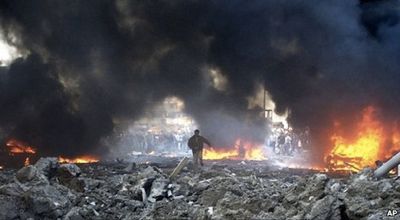
When looking at the photos and videos taken immediately after the attack, the first most striking feature is the blaze. Car parts and various types of objects are burning all around. Then, the bodies of the victims: they are charred on one side and intact on the other. An astonishing phenomenon which bears no resemblance to what is normally caused by conventional explosives. The theory that the van was transporting a mix of RDX, PETN and TNT does not account for the damages occurred.
What is more, from the photos showing Rafik Hariri’s corpse one can observe that his solid gold wristwatch has melted, whereas the collar of his luxury shirt still hugs his neck in pristine condition.
So, what really happened?
The explosion generated a blast of an exceptionally intense heat and exceptionally brief duration. Thus, the flesh exposed to the blast was instantly carbonized, while the body underneath was not burnt.
High-density objects (such as the gold watch) absorbed the heat and were destroyed. Conversely, low-density objects (like the delicate fabric of Hariri’s shirtcollar) didn’t have enough time to absorb the heat and were unaffected.
Moreover, the videos show that a number of limbs were severed by the explosion. Oddly, the cuts are clean, as if made on clay statues. There is no sign of shattered or jutting bones, nor of any torn flesh. The reason is that the explosion sucked up all the oxygen and dehydrated the bodies, rendering them friable. In the hours that followed, several on-the-spot witnesses complained of breathing ailments. Wrongfully, the authorities interpreted them as a psychosomatic reaction following their psychological trauma.
Such observations constitute the abc of any criminal inquiry. They should have been the starting point, yet they do not figure in any of the reports submitted by the "professional experts" to the Security Council.
When we asked a number of military experts what kind of explosives would be capable of generating such damage, they mentioned a new type of weapon which has been developed over several decades and is featured in reports appearing in scientific journals. The combination of nuclear and nonotechnology science can trigger an explosion the exact strength of which can be regulated and controlled. The weapon is set up to destroy everything within a given perimeter, down to the nearest centimeter.
Always according to the same military specialists, this weapon can also produce other types of effects: it exerts a very strong pressure on the area of the explosion. The minute it stops, the heaviest objects are propelled upwards. Accordingly, cars were sent flying through the air.
There is one unequivocal fact: this weapon is equipped with a nano-quantity of enriched uranium, emanating radiations which are quantifiable. Now, it just so happens that one of the passengers in Rafik Hariri’s armoured car survived the explosion. Former Minister Bassel Fleyhan was taken to a topnotch French military hospital for treatment. The doctors were astounded to discover that he had been in contact with enriched uranium. But no one linked this to the attack.
Technically speaking, the weapon is shaped like a small missile, a few tens of centimeters long. It must be fired from a drone. Actually, several witnesses assured they had heard an aircraft flying over the scene of the crime. The investigators asked the United States and Israel, whose surveillance satellites are permanently switched on, to provide them with the pertinent images. On the day of the attack, the United States had deployed AWACS aircraft over Lebanon. The live feeds could help to establish the presence of a drone and even to determine its flight path. But Washington and Tel Aviv - which indefatigably urge all parties to cooperate with the STL - turned down the request.
At a press conference held on 10 August 2010, Hassan Nasrallah showed a video which, according to him, was shot by Israeli military drones and intercepted by his organisation. All of Rafik Hariri’s movements had been registered for months, until the final day when all the surveillance converged on the bend in the road where the attack was staged. Thus, Tel-Aviv had been surveying the area prior to the assassination. Which is not to say, as Mr Nasrallah himself points out, that they were the authors of the crime.
So, who fired the missile?
This is where things get complicated. According to the military experts, in 2005, Germany was the only country which had a handle on this new technology. It is, therefore, Berlin which supplied and set up the crime weapon.
Hence, it is easy to understand why former Berlin Attorney General Detlev Mehlis - a very controversial figure within his own profession - was eager to preside the UN Investigation Commission. He is, in fact, notoriously linked to the German and U.S. secret services. Assigned in 1986 to shed light on the attack against the La Belle disco in Berlin, he diligently covered up all Israeli and U.S. fingerprints to falsely accuse Libya and justify the bombing of Mouammar Khadafi’s palace by the U.S. Air Force. In the early 2000s, Mr Mehlis was lavishly paid for his stint as researcher at the Washington Institute for Near East Policy (think-tank linked to AIPAC, the pro-Israel lobby) and at the Rand Corporation (think-tank attached to the U.S. military industrial complex). All elements which cast a shadow over his impartiality in the Rafik Hariri affair and should have sufficed to have him taken off the case.
Mehlis was seconded by Commissioner Gerhard Lehmann, who is also a well-known German and U.S. secret services agent. He was formally identified by a witness as having taken part in the programme run by the Bush Administration in Europe, involving the abduction, detention and torture of prisoners in "black holes". His name is mentioned in the ad hoc Report by the Council of Europe. Notwithstanding, he managed to dodge all judicial proceedings on the strength of a strong though unlikely alibi provided by his colleagues in the German police.
Mehlis and Lehmann propagated the theory of the explosives-laden suicide van to deflect the investigation from the German weapon that was used to commit the crime.
Various earth samples were taken from the scene of the crime. They were first mixed, then divided into three jars that were sent to three different laboratories. In the first two no trace of explosives was found. The third jar was kept by Mehlis and Lehmann, who personally sent it to the third laboratory. Here, remnants of explosives were detected. In principle, if the decision is made to resort to three judiciary experts, in case of disagreement it is the majority opinion that prevails. No way! Mehlis and Lehmann violated the protocols. They deemed that theirs was the only reliable sample and embarked the Security Council on a false trail.
The profoundly flawed character of the Mehlis-Lehmann investigations has amply been proven. Their successors acknowledged as much sotto voce and declared entire sections of proceedings nul and void.
Amidst their manipulations, the most famous one relates to the false witnesses. Five individuals purported to have seen the preparations for the attack and incriminated Presidents Bashar el-Assad and Emile Lahoud. While these allegations were fueling the drums of war, their lawyers exposed the lies and the prosecution backed down.
Based on these false testimonies, Detlev Mehlis arrested - in the name of the international community - four Lebanese generals and had them incarcerated for four years. Pushing his way with his cow-boys into private homes, without a warrant from the Lebanese authorities, he also detained for questioning members of their entourage. With his assistants - who spoke Hebrew to each other - he manipulated the families. Thus, on behalf of the international community, he showed the wife of one of the generals a doctored picture to prove that her husband had not only obscured his implication in the murder, but was also two-timing her.
Concurrently, he tried the same maneuver on the son of the "suspect"’, but in this case to convince him that his mother was a woman of loose morals, a situation which had plunged his desperate father into a murderous folly. The aim was to induce a family crime of honour, thereby tarnishing the image of respected and respectable people.
Even more incredible is Lehmann’s proposition to libertate one of the four imprisoned generals in exchange for his false testimony against a Syrian leader.
Moreover, German journalist Jürgen Cain Külbel highlighted a disturbing detail: it would have been impossible to trigger the explosion by remote control or by marking the target without first disactivating the powerful interference system built into Rafik Hariri’s convoy. A system among the most sophisticated in the world, manufactured in ... Israel.
Külbel was approached by a well-known pro-Palestinian advocate, Professor Said Dudin, to promote his book. However, the outrageous declarations frequently made by Dudin served to torpedo it instead. Külbel, a former East German criminal police officer, was quick to find out that Dudin had a long-standing reputation for being a CIA mole within the German left-wing. The journalist published a number of old East-German reports attesting to this fact and was sentenced and briefly imprisoned for illicit dissemination of documents; meantime, Dudin was settling into the German Embassy in Beirut for the purpose of infiltrating the families of the four generals.
Overlooked in the Middle East, Germany’s role in this region is worth spotlighting. After Israel’s war of aggression against Lebanon in the Summer of 2006, Chancellor Angela Merkel deployed a very large contingent to join the United Nations Interim Force in Lebanon (UNIFIL). The 2 400 soldiers from Germany control the maritime infrastructure to prevent arms supplies from reaching the Resistance via the Mediterranean. On that occasion, Ms Merkel declared that the mission of the German army was to protect Israel. A wind of rebellion arose among the officers. By the hundreds, they sent letters to remind her that they had enlisted to defend their homeland not a foreign country, be it an ally.
An unprecedented development took place on 17 March 2008 and 18 January 2010, when the German and Israeli governments held a joint Council of Ministers meeting where various programmes were adopted, especially in the defense sector. At this stage, there shouldn’t be too many secrets left between the Tsahal and the Bundeswehr.
The investigation conducted by Detlev Mehlis is both steeped in ridicule as regards the false witnesses, and tainted with the illegal detention of the four generals. To the extent that the UN Human Rights Council’s Working Group on Arbitrary Detention formally and firmly condemned this excess of power.
This being said, the opprobrium that befalls Mr Mehlis’ work should not reflect on the Special Tribunal for Lebanon which is in no way responsible for his manipulations. But here, again, things get complicated. The credibility of the STL rests on its ability to curb, in the first place, all those who attempted to mask the truth and falsely accused Presidents Bachar el-Assad and Emile Lahoud, with the intention of provoking a war.
Now, it transpires that the Tribunal refuses to try the false witnesses, giving the impression that it is covering up the manipulations under Mehlis’ watch and is in fact pursuing the similar political objectifs (this time against the Hezbollah, and perhaps against others in future). Even worse, the Tribunal will not hand over to Jamil Sayyed (one of the four generals illegally detained) the minutes of his accusers’ hearings, thereby barring him from requesting compensation and making it look as if it condones four years of arbitrary detention.
In more prosaic terms, the Tribunal is shirking its responsabilities. On the one hand, it must judge the false witnesses to thwart further manipulations and to make plain its impartiality; on the other hand it refuses to undertake a "clean-up" operation which might force it to arrest Prosecutor Mehlis. However, Odnako’s revelations on the German lead render this posture untenable. All the more since it’s already too late: General Jamil Sayyed filed a complaint in Syria and a Syrian examining magistrate has already indicted Detlev Mehlis, Commissioner Gerahrd Lehmann plus the five false witnesses. One can imagine the commotion at the STL should Syria decide to call on Interpol to have them arrested.
Just as the Mehlis commission was supposed to compensate for the lack of professionalism on the part of the Lebanese forces of law and order, the STL should equally have ensured the impartiality that the Lebanese courts may have been short of. But things are far off target, which raises the question of the Tribunal’s legitimacy.
Kofi Annan didn’t want the Lebanon Tribunal to exert international jurisdiction, but to function as a national Lebanese tribunal with an international character. It would have been subjected to Lebanese law while half of its members would have been nationals of other countries. The plan did not materialize because the negotiations came to a sudden end. More precisely, an agreement was reached with the Lebanese government presided at the time by Fouad Siniora, the former authorised representative of the Hariri estate, but it was never ratified either by Parliament or by the president of the Republic. Hence, the agreement was endorsed unilaterally by the UN Security Council (Resolution 1757 of 30 May 2007). The end result is a hybrid and fragile entity.
As pointed out by Kofi Annan, this Tribunal is not analogous to any other so far been created within the purview of the United Nations. "It is neither a subsidiary organ of the UN, nor a component of the Lebanese judiciary system"; it is simply "a conventional organ" sitting between the executive authority of the Lebanese government and the UN. Judging by the international rule of separation of powers and independence of the judiciary, the STL cannot be regarded as a genuine tribunal, but rather as a joint disciplinary commission within the executive frameworks of the UN and the Lebanese Government. Whatever decision it may make will inevitably be coated with suspicion.
Worse still, any Lebanese government can terminate it since, not having been ratified, the related agreement was binding only on the previous government. As a result, the present Lebanese coalition government has become a battlefield between partisans and foes of the Tribunal. In an attempt to maintain governmental stability, week after week Lebanese President Michel Sleimane has been dissuading the Council of Ministers from taking a vote on any issue linked with the STL. This embargo cannot hold out forever.
Bad news coming in pairs, suspicions have now extended to the President of the STL, Antonio Cassese. This reputable international jurist was President of the International Criminal Tribunal For the Former Yugoslavia (ICTY). He happens to be a ardent supporter of the Jewish colonialisation of Palestine. A personal friend of Elie Wiesel, Cassese received and accepted an honorary award, presented by Wiesel himself. He should normally have withdrawn and resigned when Hassan Nasrallah disclosed that Israeli drones had been reconnoitering the crime scene as well as the victim’s movements for months.
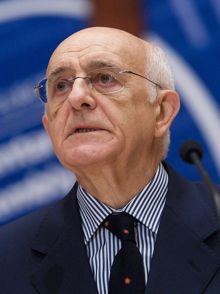
- According to the President of the Special Tribunal for Lebanon, Antonio Cassese, the armed resistance in Palestine, Lebanon, Iraq and Afghanistan should be tried for "terrorism".
Worst of all, Judge Cassesse personifies an interpretation of international law that causes division in the Middle East. Although his official curriculum vitae obscures it, he took part in the 2005 negotiations between member states of the European Union and those bordering the Mediterranean Sea ("Barcelona Process: Union for the Mediterranean"). His definition of terrorism blocked the discussions. According to him, terrorism is exclusively the act of individuals or private groups, never states. It follows that a struggle against an occupying army would not be considered as "resistance" but as "terrorism". In the local context, this juridical view is consistent with a colonial framework and disqualifies the STL.
The methods of the Special Tribunal do not differ from those applied by the Mehlis Commission. STL investigators collected mass files on Lebanese students, social security recipients and subscribers of public utility services. On 27 October, in the absence of the Lebanese judges, they even tried to snatch medical records from a gynecological clinic frequented by the wives of Hezbollah members. It is obvious that these probes have no link whatsoever with the Rafik Hariri assassination. Everything leads the Lebanese to believe that the information is actually earmarked for Israel, of which, in their eyes, the TSL is merely an offshoot.
All these problems had clearly been foreseen by President Putin when, in 2007, he had vainly made a pitch for a different wording of the STL founding resolution. Ambassador Vitaly Churkin had denounced the "juridical loopholes" of the system. He deplored that the Security Council should threaten to resort to force (Chapter VII) to achieve unilaterally the creation of this "conventional organ". He had emphasised that while the Tribunal should be working towards the reconciliation of the Lebanese people, it was devised in such a way as to divide them even more. Finally, Russia - as China - refused to endorse Resolution 1757.
The truth ultimately seeps through. The Israeli drone videos released by the Hezbollah expose Israel’s involvement in the crime preparations. The facts revealed by Odnako point to the use of a sophisticated German weapon. The puzzle is nearly complete.
Thierry Meyssan
French political analyst, founder and chairman of the Voltaire Network and the Axis for Peace conference. He publishes columns dealing with international relations in daily newspapers and weekly magazines in Arabic, Spanish and Russian. Last books published in English : 9/11 the Big Lie and Pentagate.
http://www.jpost.com/MiddleEast/Article.aspx?id=191638
Iran-funded book accuses Israel of Hariri assassination
JONNY PAUL
10/17/2010
According to a book, about to be published in English, it was Israel which carried out the assassination using a missile manufactured in the United States.
Thierry Meyssan, the French-born author, is alleged to have been paid one million dollars by the Iranian Revolutionary Guard to write the book.
The revelations come as heightened tensions in the region following a controversial two-day visit by Iranian President Mahmoud Ahmadinejad.
A tribunal backed by the United Nations has been investigating the 2005 Beirut car bombing, which claimed the lives of Hariri and 21 others, and is expected to lay the blame for the killings at the door of Hizbullah.
According to a profile he has posted on the business website LinkedIn, Meyssan is now residing in Beirut, but the 53-year-old has spent half of the last year researching the book in Iran.
Titled L’effroyable Imposture II (The Big Lie 2), it is a followup to his 2002 book 9/11: The Big Lie, which claimed that the 9/11 attacks were carried out by a rogue element within the US military.
Meyssan sparked fury within the US Senate by insisting that the Pentagon was hit by a US missile, and not American Airlines Flight 77. In 2005, the US State Department took the unprecedented step of identifying him as someone who was actively promoting misinformation about America, saying he was persona non grata.
The book, which spawned a whole host of conspiracy theories, was translated into 26 languages, becoming a bestseller in the process.
Meyssan’s new book details what he claims is a cover up between Israel and America designed to hide the fact that they jointly carried out the assassination of Hariri.
He had hoped to keep its publication secret until a launch in Beirut later this month but leaks have already been appearing on various websites in the US and Lebanon.
According to a blogger on the 9/11 conspiracy website TruthAction.org, Meyssan is using evidence provided to him by Hizbullah showing that an Israeli drone was tracking Hariri long before his assassination.
Hizbullah’s leader Hassan Nasrallah held a press conference in Beirut in August in which he claimed his scientists had hacked into the electronic data on the drone and been able to reproduce photographs it took of the former prime minister’s movements.
The French author’s reported association with the Iranian Revolutionary Guards is intriguing. Set up shortly after the 1979 Iranian revolution, several former members of the Guards now have posts in Ahmadinejad’s cabinet.
More pertinently, the Guards also control a third of Iran’s economy through a series of subsidiaries and trusts. This already substantial stake is reported to have increased recently with the purchase of a majority stake in the country’s main telecommunications company.
California-based Jim Hoffman, who created a number of 9/11 conspiracy websites, this week warned anyone reading Meyssan’s book to be extremely wary of his claims.
“When I first looked into it [September 11], I was swept up towards his way of thinking, the lack of debris around the Pentagon after the attack there and so forth,” Hoffman said. “But after reading his book, I looked into the actual evidence myself. I found a side story that is based on salacious assumptions and unscientific evidence.
“What he did was very damaging for legitimate attempts to investigate the crime scene, because it created this storm of nonsense basically.
“I will not be reading this latest book for the same reason,” Hoffman said.
Victoria Ashley, who runs another 9/11 conspiracy website, said, “Maybe it is all just talk, but the impression many of us had was that his role was to basically spread the ‘no plane at the Pentagon’ hoax around the world, quickly and in many languages, with resources no average political activist would ever have.”
beirut: show of arab unity to prevent new stl plot
intel updates: us/russia/lebanon/uk/turkey/germany/israel/rsa/kennedies
strategy shift in the middle east
beirut: us embassy under fireproces hariri: paris en porte-a-faux
us at home in beirut, afghan heroin for kosova mob...
washington / beyrouth: espionnage et passe-droit
war council in damascus
lebanon: the real hezbollah
cheney a tue hariri à la demande du hezbollah ;-)
aoun hezbollah links feared by siniora
witness bribed in hariri case
hariri murder: witness paid to charge syria
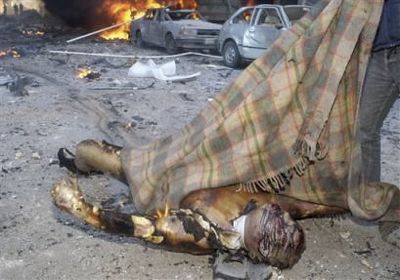
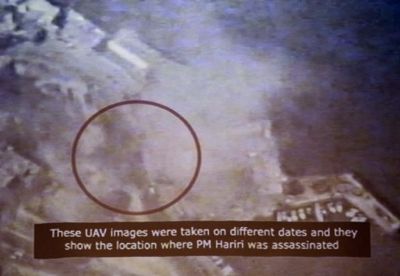
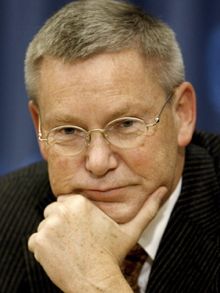





![[Most Recent Quotes from www.kitco.com]](http://www.kitconet.com/charts/metals/gold/t24_au_en_eukg_2.gif)
